NFTs are non-fungible tokens. They are unique items that you can’t replace with something else. For example, a one-of-a-kind trading card is an NFT – you can’t just replace it with any other card. If you trade your card for some other card, you have something different. These differ from fungible items, which are often the same as each other. If you trade one bitcoin for another, you end up in the same position as where you started, for instance. On the other hand, if you swap a near-worthless mass-produced late 80s baseball card for a 1909 American Tobacco Company T206 Honus Wagner card (valued at over $1 million), you’ve done very well for yourself.
Nowadays, most NFTs tend to be digital. This makes it particularly easy for creators to give their supporters something rare and unique. Some NFTs, for example, are digital artworks, and people are now collecting these digital artworks, just like collectors have collected physical paintings for years. And some of these NFTs have gone for extraordinary prices. One NFT artwork by a digital artist called Beeple sold for $69 million at Christie’s.
A more down-to-earth version of a modern digital NFT is CryptoKitties. They are an Ethereum blockchain game where users can buy, sell and breed digital “cats.” Every “cat” is unique (just like your real-life pet).
In some ways, NFTs are similar to Bitcoins and other cryptocurrencies, except, of course, they are non-fungible and non-divisible. The first NFTs were part of the Ethereum blockchain, which stores extra electronic information to distinguish their uniqueness. Other blockchains now also facilitate NTFs. Because of the differing blockchain technology behind particular NFTs, not all NFT marketplaces buy and sell all types of NFT. Creators will often select an NFT marketplace based on whether that marketplace supports a specific NFC token standard. Ethereum has released two standards now: ERC-721 and ERC-1155. Competitor, Binance, has since released standards BEP-721 and BEP-1155. The two “1155” standards differ from the original “721” standards because they allow multiple NFTs to be bunched and transacted together.
Most NFT platforms require buyers to have a digital wallet and use cryptocurrencies to pay for their purchases.
Top NFT Marketplaces for Creators:
OpenSea boldly describes itself as being the largest NFT marketplace. It offers a wide range of non-fungible tokens, including art, censorship-resistant domain names, virtual worlds, trading cards, sports, and collectibles. It includes ERC721 and ERC1155 assets. You can buy, sell, and discover exclusive digital assets like Axies, ENS names, CryptoKitties, Decentraland, and more. They feature over 700 different projects, including trading card games, collectible games to digital art projects, and name systems like ENS (Ethereum Name Service).
Creators can create their own items on the blockchain using OpenSea’s item minting tool. You can use it to make a collection and NFTs for free, without the need for a single line of code. If you’re developing your own smart contract for a game, digital collectible, or some other project with unique digital items on the blockchain, you can easily get added to OpenSea.
If you’re selling items on OpenSea, you can sell an item for a fixed price, create a declining price listing, or make an auction listing.

OpenSea
The world’s largest digital marketplace for crypto collectibles and non-fungible tokens (NFTs), including ERC721 and ERC1155 assets. Buy, sell, and discover exclusive digital assets like Axies, ENS names, CryptoKitties, Decentraland, and more.
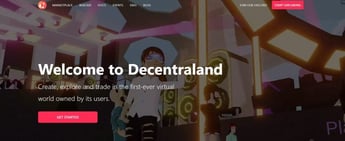
Decentraland is a VR world created on the Ethereum blockchain, which helps make it a safe and reliable NFT marketplace. It lets users acquire virtual properties and other digital assets like wearables, art, and even names, which are stored in smart contracts on the Ethereum blockchain.
Aside from allowing you to purchase digital assets, Decentraland also lets you create your own assets that you can list on the Decentraland Marketplace. It has an easy-to-use drag-and-drop Builder tool that lets you create avatars and 3D scenes.
What makes Decentraland different from other marketplaces is its tokens are designed to have the same worth and transferability as that of their real-world counterparts.
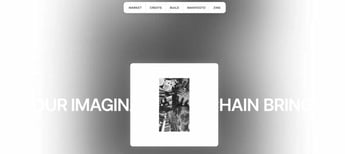
Zora started as an invitation-only NFT marketplace. However, it has since become an open platform that allows creators, collectors, and artists to buy and sell a range of NFT types, including art, music, and media. It operates as a media registry protocol that lets creators publish their works, earn money from sales proceeds, and allow other users to create and share their work.
Zora’s manifesto pushes for collaboration and the implementation of “Collective Creation,” where the platform and its users can work together to create a more transparent, accessible, and ownable infrastructure. One of the ways Zora makes this happen is by giving creators more ownership rights and making sure they get compensated for their work. You can have perpetual bids, which allows other users to place a bid on your works using any currency. It also has a zero-fee protocol, so you won’t get charged when you list and sell your NFTs on the platform.
Zora has a unique framework. Instead of selling copies of digital goods and creating artificial scarcity, it pushes creators to make one original work that’s openly accessible to other users. The token itself can be resold any number of times, and as it gains popularity, collectors can purchase the work directly from the artist. If you manage to sell an NFT, you get a cut from every sale. If your token becomes more popular, then there’s more opportunity for you to earn more.
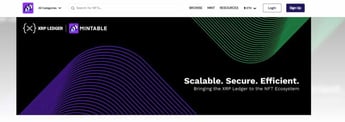
Mintable is an NFT marketplace that’s built on the Ethereum blockchain. It lets creators mint their NFTs for free and makes it easy for you to sell or auction your works. While it’s still relatively new to the industry—it was founded in 2018—Mintable is backed by a billionaire entrepreneur and investor, Mark Cuban.
On Mintable, a variety of users, like musicians and animators, can create, distribute, purchase, sell, and trade their digital assets. The platform allows creators to use smart contracts on the blockchain so they can create digital assets even without knowing how to code. It also lets creators turn their digital files like PDFs and MP4s into NFTs that they can market through their own Mintable store.
Mintable is easy to use and lets creators mint and list items using the platform’s gasless feature (if you mint using Immutable X). What makes Mintable so appealing to both creators and collectors is its impressive collection of digital assets, which can range from art to games. If you’re new to selling NFTs, visit the Mintable Academy, which covers topics such as how to create your own store, how to sell more items, and how to promote them.
Before you can fully utilize Mintable, you need to purchase Ethereum first from exchanges like Gemini and Binance. You then have to connect your wallet, where you can store your digital assets and cryptocurrency, to Mintable to facilitate all of your marketplace transactions. Mintable supports the MetaMask wallet. As of writing, it has stopped supporting Coinbase.
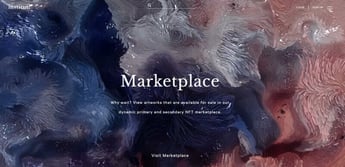
Unlike most NFT marketplaces that are founded or run by tech companies or entrepreneurs, Institut is a platform that’s designed with an “’art-first’ perspective,” according to Institut co-founder Joe Kennedy. It’s a premier NFT platform that uses new and emerging technologies to not only empower artists but also to open the world of NFTs to contemporary art enthusiasts. It also aims to act as a bridge that connects two disparate art communities: traditional and digital.
Think of it as like an online contemporary art gallery, but for NFTs. The artworks and artists on the platform are highly curated. But while it’s currently an invitation-only program, Institut encourages artists to submit their work for review. If your submission is successful, you’ll then receive an invitation from the Institut team.
The platform houses an eclectic mix of international artists. Institut’s current roster includes Adrian Schachter, Betty Leung, and HUSH.
Institut is both an NFT platform and marketplace. It can mint NFTs on the artist’s behalf and gives artists access to an Institut wallet they can use to store their creations. You can also use the same wallet to purchase other NFTs via live auctions or fixed-price sales.
While it’s built on the Ethereum blockchain, Institut uses a hybrid system that eliminates the need for gas fees. This same system also lets other enthusiasts purchase NFTs even without a Metamask wallet by using their email addresses and credit cards.
Artists get an 85% cut of the primary sales and up to 10% for secondary sales.
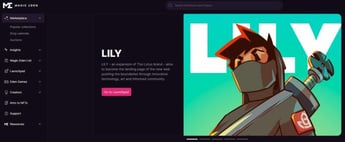
Magic Eden is a Solana NFT marketplace that bills itself as a “web3-first marketplace”. To date, it has over 7,000 collections and a secondary trading volume of $1.6 billion.
Aside from being an NFT marketplace, Magic Eden also supports game creators and launched Eden Games, a hub for NFT games on the Solana blockchain. It also offers partnership and whitelabel marketplaces, allowing others to create their own marketplaces. Some NFT marketplaces powered by Magic Eden include Thugbird’z Thugstore and Galactic Geckos NFT.
Additionally, Magic Eden has its Launchpad, its exclusive minting platform. It gives creators access to hassle-free minting that comes with dedicated development support. Creators can start minting in just four simple steps:
- Visit the launchpad.
- Connect your Solana wallet.
- Wait for the public or presale mint countdown.
- Start minting after the countdown.
look this @ImmoralKids have not stopped! Impeccable art and an empowering community! Looking to getting my Duppies spot! ??? pic.twitter.com/N4OOHmvDk8
— whoami . S◎L (@MZulfikarFebri1) June 28, 2022
Magic Eden also gives artists another option for minting. You can mint your NFT on an NFT collection’s own website on the Magic Eden platform. To know more, you can join a collection’s Discord server.
Because it’s built on the Solana blockchain, Magic Eden only allows users to use Solana wallets like the Phantom wallet.
Top 16 NFT Marketplaces
Credit: Source link


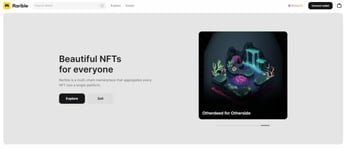
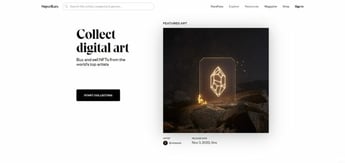
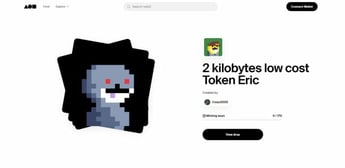
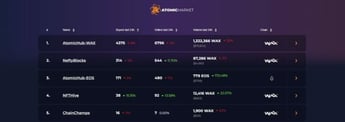
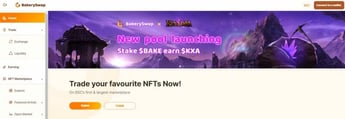

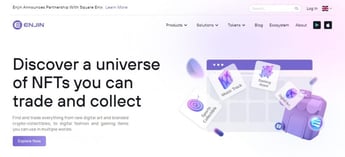
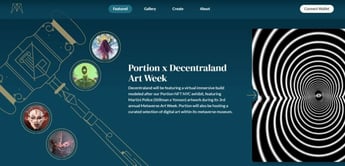
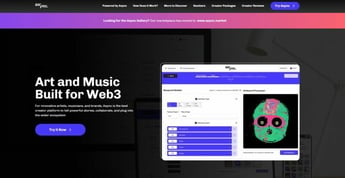
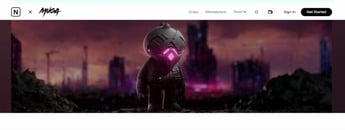
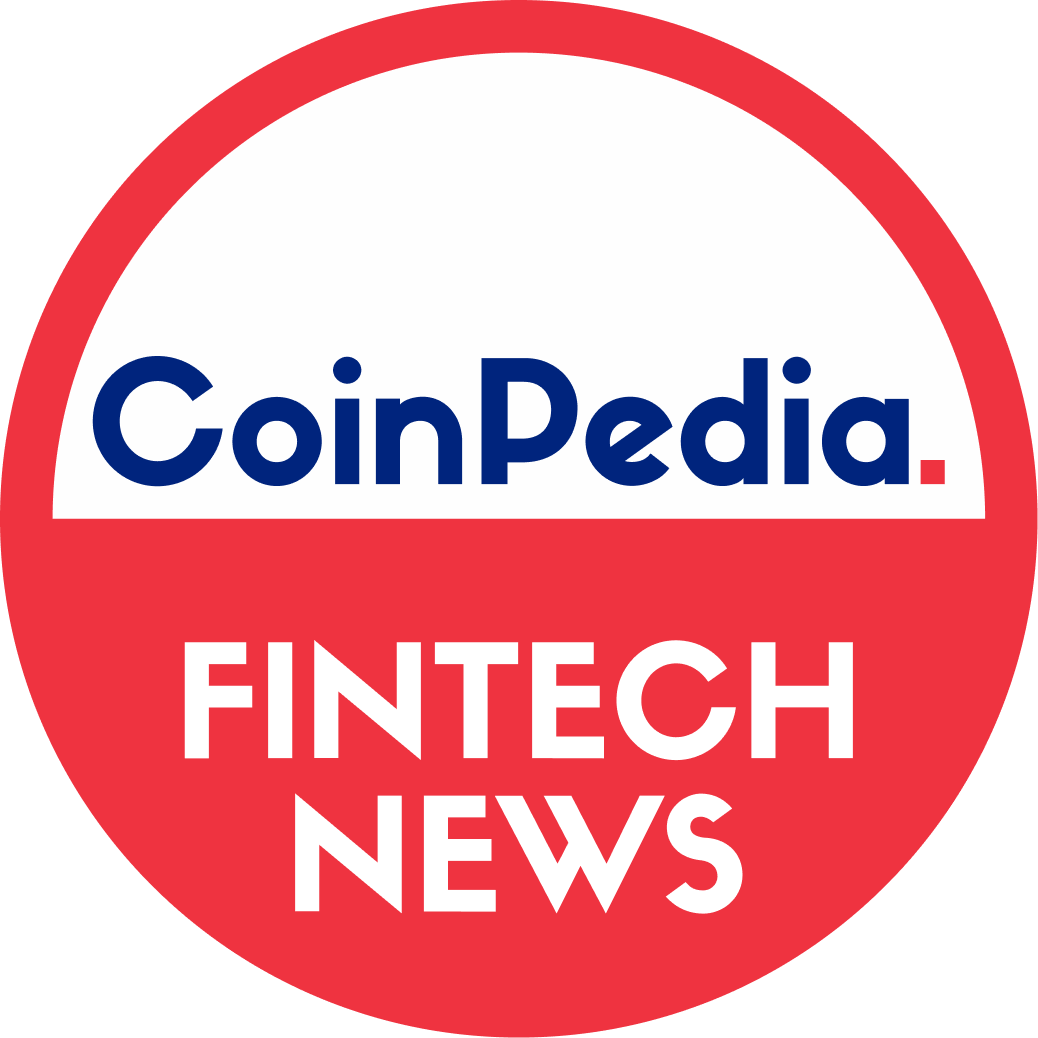
 Bitcoin
Bitcoin  Ethereum
Ethereum  XRP
XRP  Tether
Tether  Solana
Solana  USDC
USDC  Dogecoin
Dogecoin  Lido Staked Ether
Lido Staked Ether  TRON
TRON  Cardano
Cardano  Wrapped stETH
Wrapped stETH  Wrapped Bitcoin
Wrapped Bitcoin  Chainlink
Chainlink  Ethena USDe
Ethena USDe  Hyperliquid
Hyperliquid  Sui
Sui  Stellar
Stellar  Avalanche
Avalanche  Figure Heloc
Figure Heloc  Wrapped eETH
Wrapped eETH  Bitcoin Cash
Bitcoin Cash  WETH
WETH  Hedera
Hedera  Litecoin
Litecoin  LEO Token
LEO Token  Coinbase Wrapped BTC
Coinbase Wrapped BTC  Binance Bridged USDT (BNB Smart Chain)
Binance Bridged USDT (BNB Smart Chain)  USDS
USDS  Mantle
Mantle  Shiba Inu
Shiba Inu  Cronos
Cronos  Toncoin
Toncoin  Polkadot
Polkadot  WhiteBIT Coin
WhiteBIT Coin  USDT0
USDT0  Monero
Monero  Ethena Staked USDe
Ethena Staked USDe  World Liberty Financial
World Liberty Financial  Uniswap
Uniswap  OKB
OKB  Dai
Dai  Aave
Aave  Pepe
Pepe  Ethena
Ethena  Bitget Token
Bitget Token  Aptos
Aptos  NEAR Protocol
NEAR Protocol  Jito Staked SOL
Jito Staked SOL